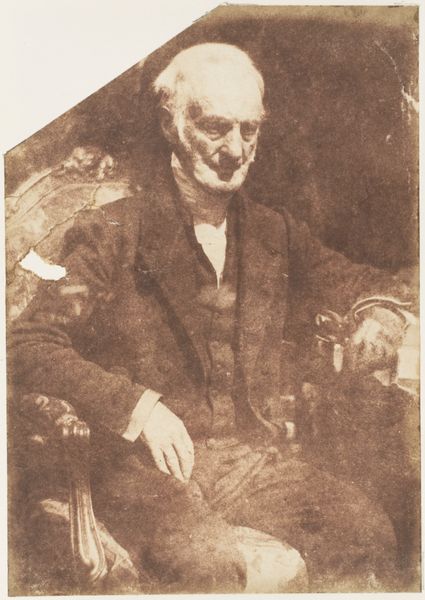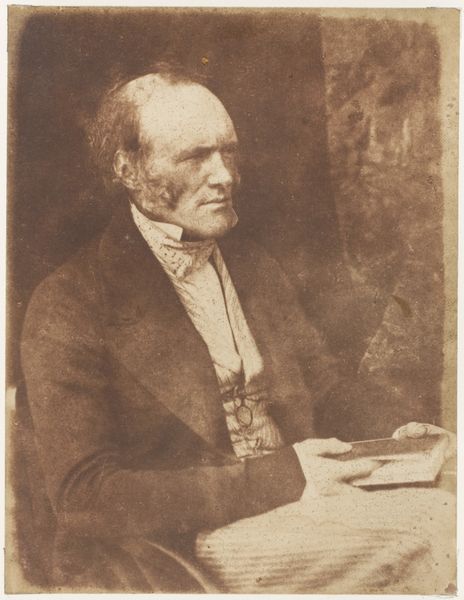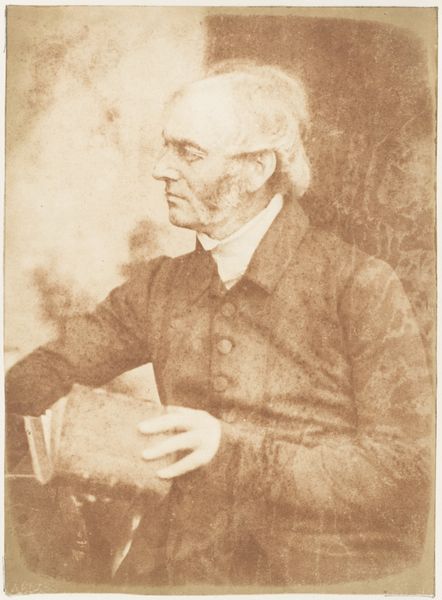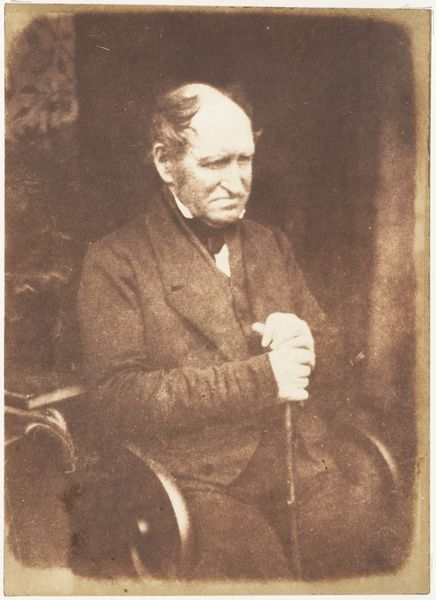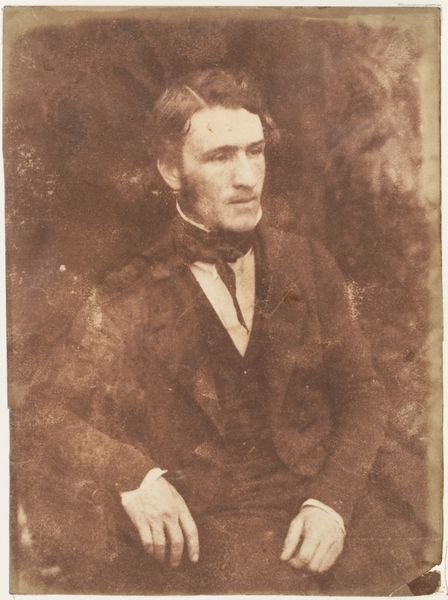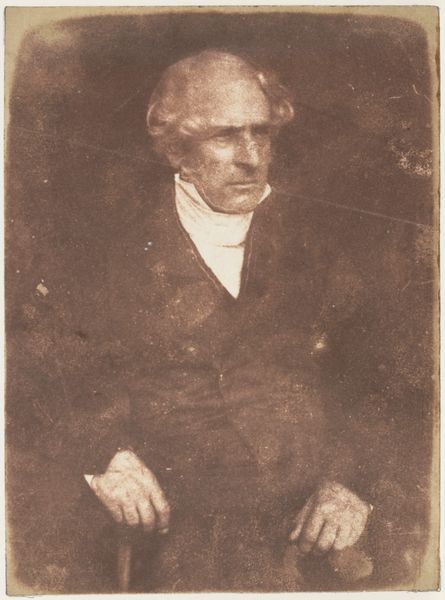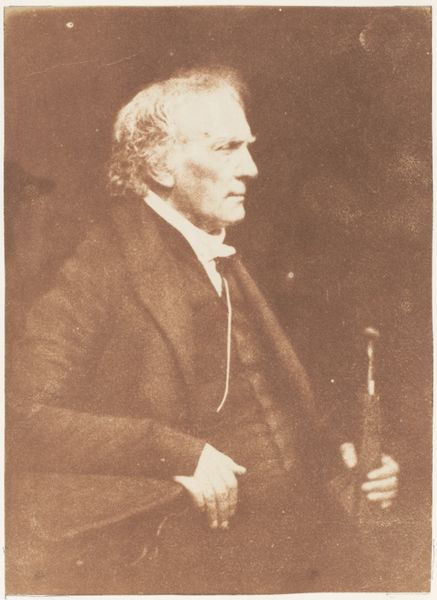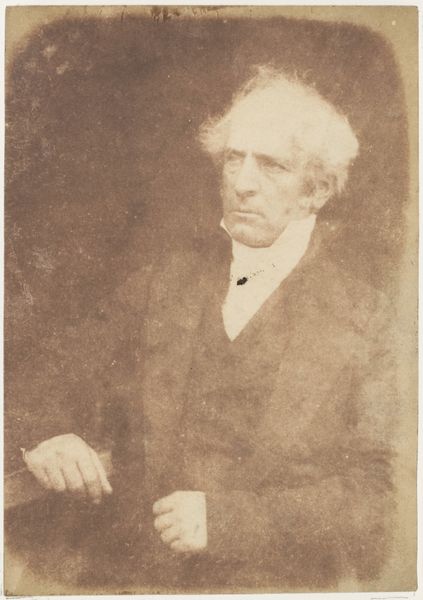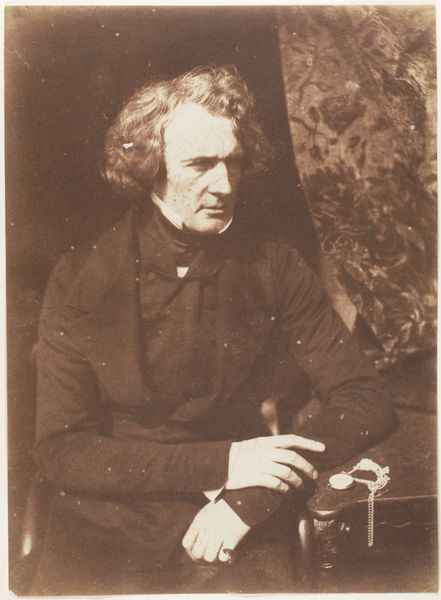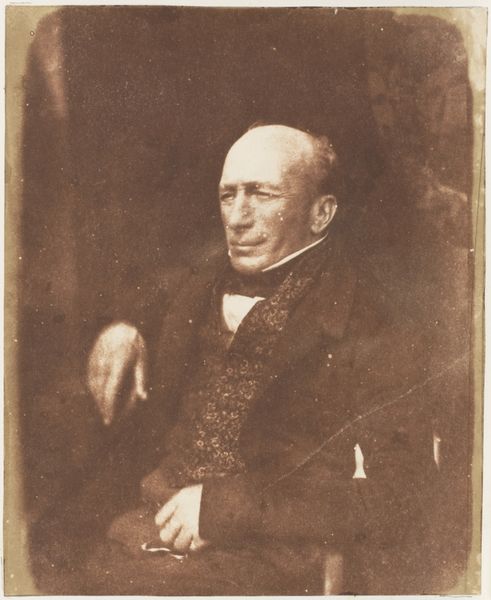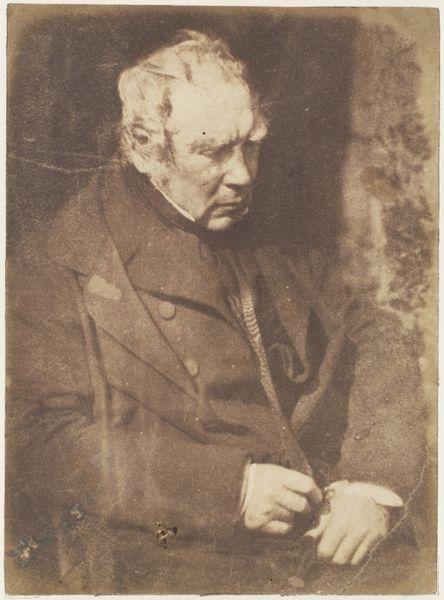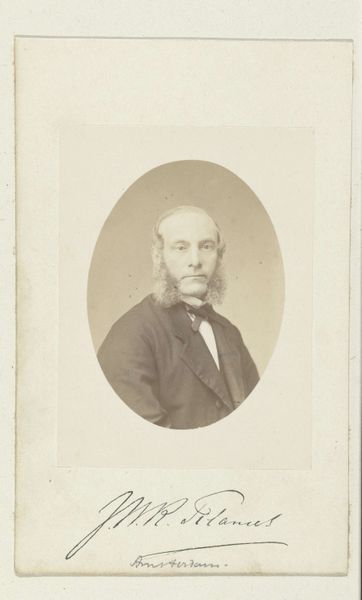
daguerreotype, photography
#
portrait
#
daguerreotype
#
photography
#
romanticism
#
academic-art
Copyright: Public Domain
Editor: This is a daguerreotype by Hill and Adamson, "Rev. Dr. John Purves, Jedburgh," created sometime between 1843 and 1847. The sepia tones give it such a specific feel, almost dreamlike. What draws your attention when you look at this image? Curator: For me, it's the materiality itself. Think of the process involved in creating this portrait. Coating a copper plate with silver, exposing it to mercury vapor…it’s almost alchemical! The labor invested is significant, making the subject’s social standing immediately apparent. This wasn't a process for the masses. Editor: So, the photograph as an object communicates social information? Curator: Absolutely. Photography democratized portraiture in some ways, but in its early days, the very act of sitting for a daguerreotype signified wealth and status. What kind of labor and material extraction was involved in that, and who benefited from that? Editor: I never really considered it that way, it is amazing to consider who had the time, money and, access to chemicals for the creation of an image. Did the mass availability change people’s consumption habit? Curator: The rise of photography certainly shifted visual culture and habits of consumption, but think about the material remnants. Silver, copper, mercury…each plate carries a legacy of extraction and production. It encourages you to think differently about the seemingly simple creation. Editor: It does makes me rethink photography, the whole process of capturing images now is so different! Curator: Indeed, it also serves as a reminder to investigate beyond the aesthetic when trying to assess its importance or historical value.
Comments
No comments
Be the first to comment and join the conversation on the ultimate creative platform.
